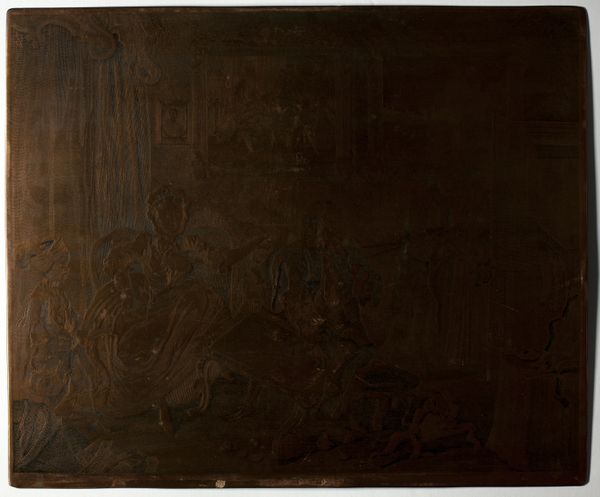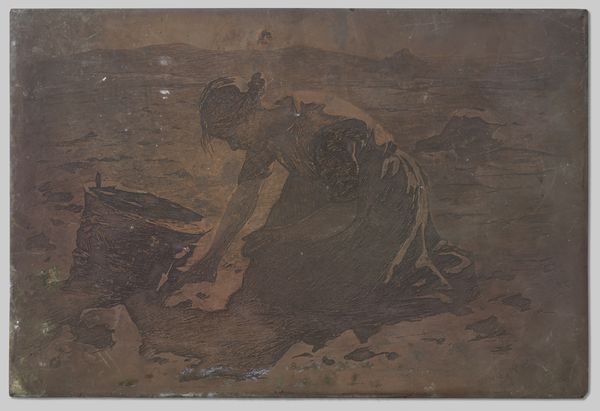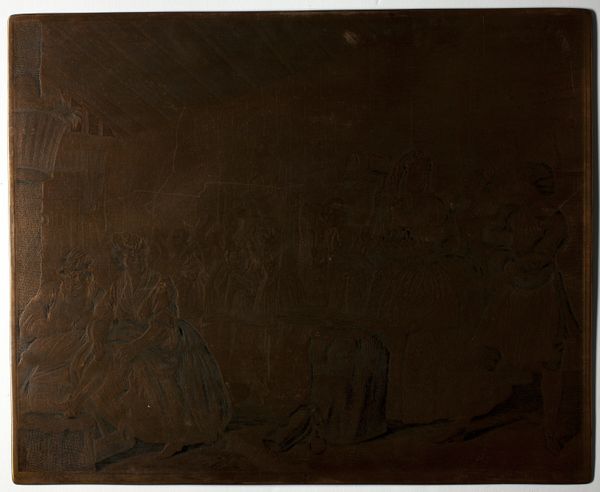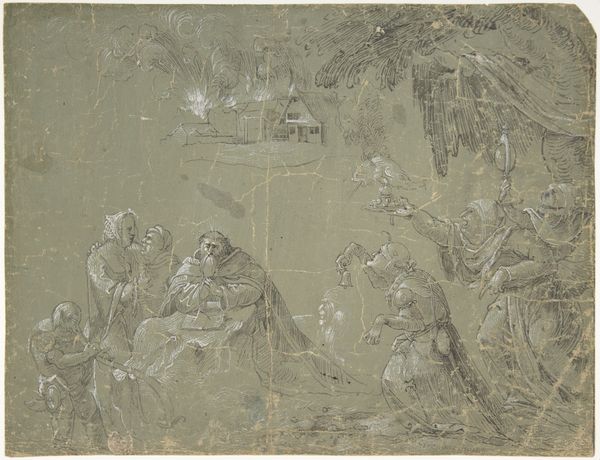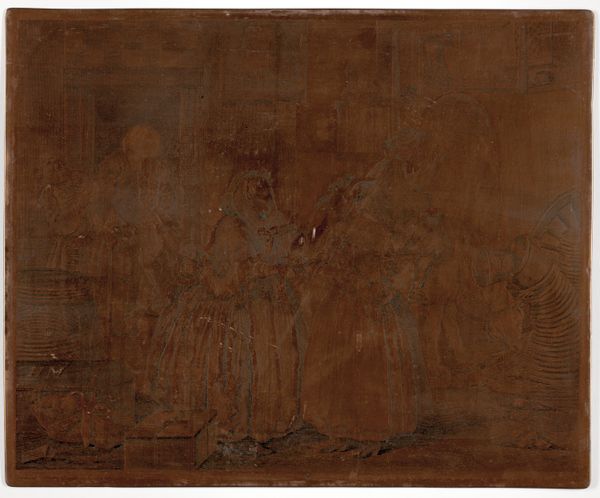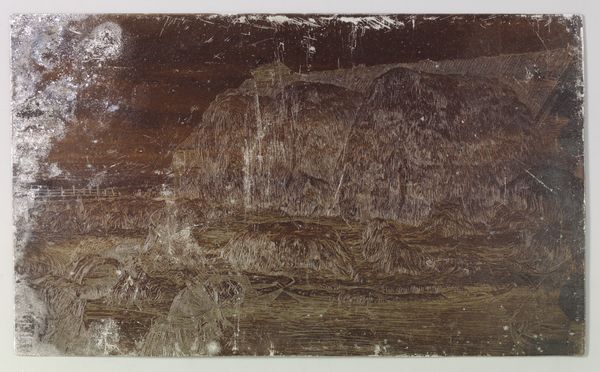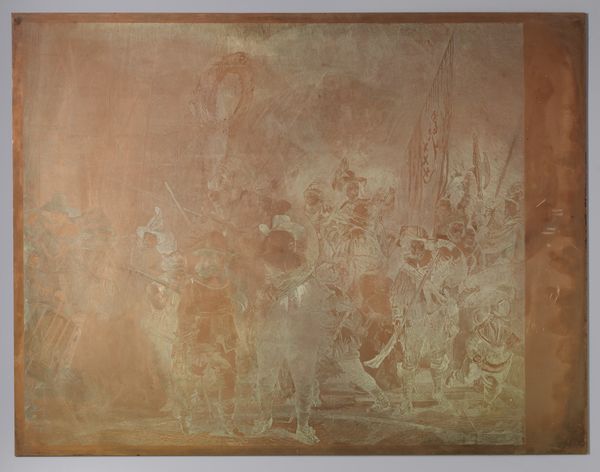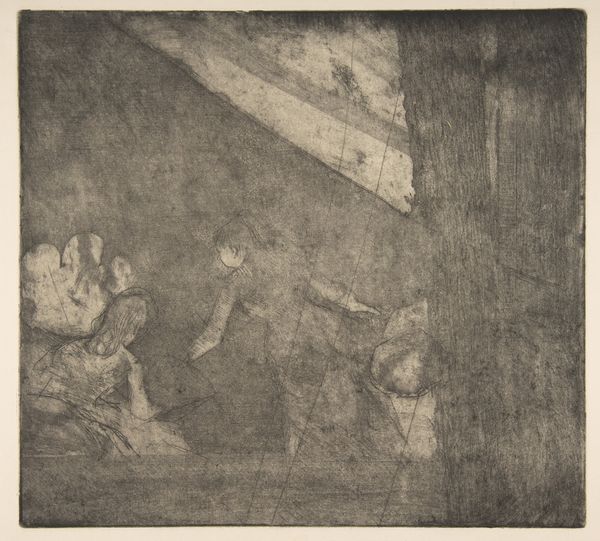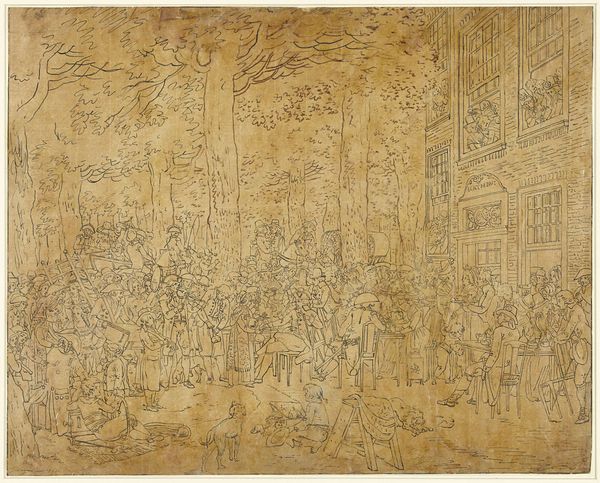
drawing, print, etching
#
drawing
#
narrative-art
#
baroque
# print
#
etching
#
genre-painting
Dimensions: 325 × 393 mm
Copyright: Public Domain
Editor: So, here we have "Plate five, from A Harlot's Progress," made by William Hogarth around 1732 to 1744. It’s an etching and drawing. The scene is really bleak; everyone looks miserable and there's such a somber atmosphere. What social commentary do you see Hogarth making here? Curator: This is a powerful image for understanding 18th-century London's social anxieties. Hogarth used his art as a mirror reflecting the moral decay he perceived. This specific scene, part of a series, showcases the consequences of a life led astray, but not without implicating the societal structures that enable such outcomes. Consider the figures present – what roles might they play, and whose interests do they represent? Editor: I see a clergyman, and some women… it feels like they are exploiting someone vulnerable. Are you saying that the elite and institutions of the time are being criticised for their role? Curator: Exactly. Hogarth was deeply critical of the social and economic inequalities of his time. These images were very popular as prints precisely because they spoke to the anxieties and hypocrisies present in society, whilst entertaining viewers from diverse social classes. To some degree it both critiqued, and cemented, existing values. He questions whether those in positions of power truly act in the best interest of those they are meant to serve, or whether they are complicit in a cycle of exploitation. Editor: That makes a lot of sense. I hadn't really thought about how prints themselves could be a form of social commentary, just by being accessible to a wider audience. I see the complexity of his approach. Curator: And the prints also contributed to Hogarth's own rise as a recognized artist, reshaping the market for art. These were images for public consumption. Understanding the institutional framework is critical for grasping art's power. Editor: I guess I was so focused on the narrative, I didn't fully appreciate how the artwork itself operated within its society. Curator: Indeed. It's a reminder that art doesn't exist in a vacuum, and thinking about how socio-political forces shape both creation and reception provides critical perspectives on the work and its lasting impact.
Comments
No comments
Be the first to comment and join the conversation on the ultimate creative platform.
